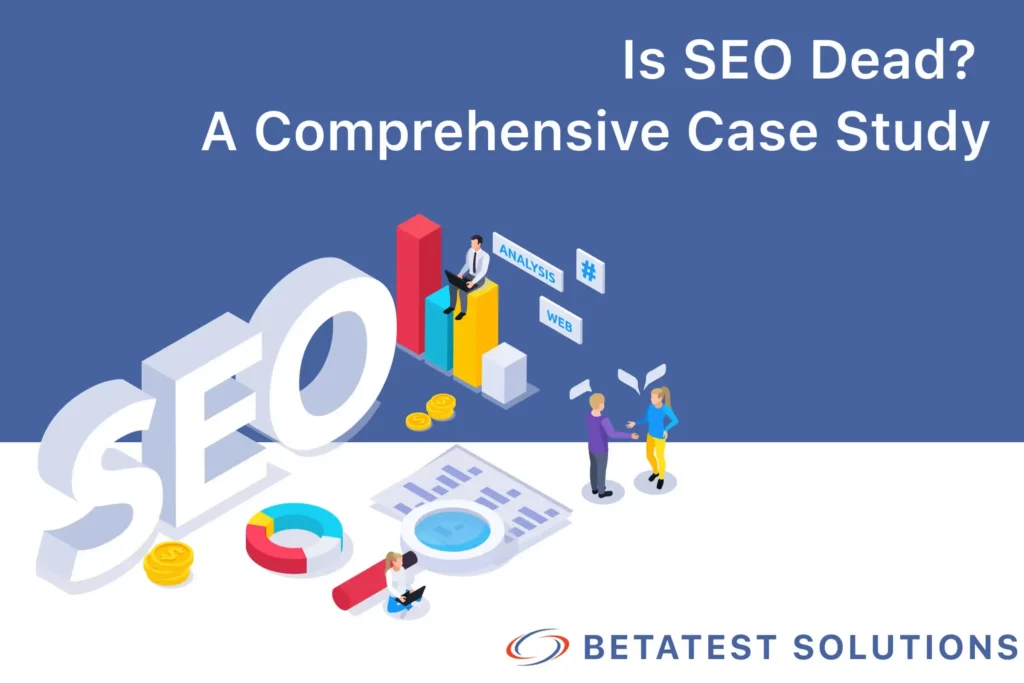Welcome to the world of websites, where having a killer design is absolutely essential for any business or organization. But guess what? A lot of website owners out there are totally oblivious to the fact that web design can make or break their search engine optimization (SEO) game. Yep, you heard it right. From wonky navigation to sluggish loading speeds, there are a bunch of web design blunders that can seriously mess up your SEO rankings. Don’t worry though, we’ve got your back!
In this article, we’re going to dive into the most common mistakes people make with SEO web design and spill the beans on how to dodge ’em. So, stick around and let’s get this design party started!
What Web Design Mistakes Hurt SEO?
When it comes to web design, certain mistakes can have a negative impact on your SEO. One of the most common errors is having a website that is not mobile-friendly. With mobile devices accounting for a significant portion of internet traffic, search engines prioritize responsive websites in their rankings. If your website is not optimized for mobile, you risk losing out on potential customers and damaging your SEO rankings.
Another web design mistake that can hurt your SEO is poor website navigation. If visitors find it difficult to navigate your website and find the information they are looking for, they are likely to leave and look elsewhere. This high bounce rate can signal to search engines that your website is not relevant or user-friendly, leading to a drop in rankings.
How Can Website Design Affect SEO?
Website design plays a vital role in determining the success of your SEO efforts. A well-designed website can improve user experience, increase website traffic, and boost conversions. On the other hand, a poorly designed website can hinder your SEO rankings and drive potential customers away.
One way in which website design affects SEO is through page loading times. Slow-loading websites frustrate users and can lead to higher bounce rates. Search engines take into account the loading speed of websites when determining rankings, so it is crucial to optimize your website for fast loading times.
Additionally, website design affects SEO through the use of proper HTML coding. HTML errors can prevent search engine bots from properly crawling and indexing your website, resulting in lower visibility in search results. It is essential to ensure that your website’s HTML is error-free and follows best practices to maximize your SEO potential.
5 Common Mistakes in SEO Web Design
Now that we understand the importance of web design in SEO, let’s explore the most common mistakes that website owners make:
- Lack of Mobile Optimization: With the majority of internet users accessing websites through mobile devices, having a mobile-friendly website is crucial. Failure to optimize your website for mobile can result in lower rankings and a loss of potential customers.
- Poor Navigation: A website with confusing or complicated navigation can frustrate users and lead to higher bounce rates. Clear and intuitive navigation is essential for a positive user experience and higher SEO rankings.
- Slow Loading Times: Slow-loading websites not only frustrate users but also negatively impact SEO. Optimizing your website for fast loading times can improve user experience and boost your rankings.
- Ignoring HTML Errors: HTML errors can prevent search engine bots from properly crawling and indexing your website. Regularly checking for and fixing HTML errors is crucial for maintaining good SEO rankings.
- Lack of Quality Content: Content is king in the world of SEO. A website that lacks high-quality, relevant content will struggle to rank well in search engine results. Make sure to provide valuable content that answers users’ queries and keeps them engaged.
What is the biggest mistake in web design?
When it comes to web design, there are plenty of pitfalls to avoid, but one mistake stands head and shoulders above the rest: neglecting user experience. It’s easy to get caught up in the aesthetics and flashy features of a website, but if it fails to provide a seamless and enjoyable experience for visitors, all your efforts go down the drain.
Think about it: Have you ever landed on a website that took ages to load, had cluttered navigation, or bombarded you with annoying pop-ups? It’s frustrating, right? Well, that’s exactly the kind of experience you want to avoid creating for your own users.
A common mistake is ignoring the importance of responsive design. With the increasing use of mobile devices, failing to optimize your website for different screen sizes is a major blunder. Visitors should be able to easily navigate and interact with your site, regardless of whether they’re using a smartphone, tablet, or desktop computer.
Another crucial mistake is neglecting accessibility. Your website should be usable by people of all abilities, including those with visual or hearing impairments. Failing to incorporate accessibility features like alt text for images or proper heading structure not only excludes a significant portion of potential visitors, but it’s also ethically wrong.
Remember, web design is about more than just making things look pretty. It’s about creating an engaging and intuitive experience that keeps users coming back for more.
What are some bad examples of web design?
Oh boy, where do I even begin? There are countless examples of bad web design out there that make you question the sanity of the designers. Let me walk you through a few prime offenders that should be locked up in the Web Design Hall of Shame.
First up, we have the dreaded “flashy overload” websites. These monstrosities assault your senses with an explosion of colors, animated GIFs, and a cacophony of auto-playing music. Seriously, who thought it was a good idea to bring back the neon text and dancing hamsters from the ’90s?
Then there are the sites that seem to have a vendetta against white space. Every inch of the screen is crammed with text, images, buttons, and banners. It’s like trying to read a novel while being suffocated by an avalanche of information. Newsflash: Less is more! Give your content some breathing room, and your visitors will thank you.
Next, let’s talk about navigation nightmares. You know you’re in trouble when finding a specific page on a website feels like navigating a maze blindfolded. Hidden menus, confusing icons, and convoluted paths to important information can turn even the most patient users into frustrated escape artists desperately searching for the exit button.
Lastly, we can’t forget those websites that refuse to get with the times and embrace responsive design. When a site looks perfectly fine on a desktop but turns into an unrecognizable mess on a mobile device, you know you’re dealing with a design disaster.
Learn from these examples, my friends, and strive to create websites that are clean, intuitive, and user-friendly. Your visitors will appreciate it, and your reputation as a web designer will thank you.
Do HTML errors affect SEO?
Ah, the eternal debate: Do HTML errors have an impact on SEO? Let’s clear the fog and shed some light on this topic.
In short, yes, HTML errors can indeed affect your search engine optimization efforts. While search engines like Google have become smarter in deciphering imperfect code, it’s still important to keep your HTML clean and error-free for several reasons.
Firstly, HTML errors can hinder search engine crawlers from properly indexing your website. These crawlers rely on structured code to understand the content and structure of your pages. When faced with errors, they may struggle to interpret your content accurately or, in some cases, skip parts of it altogether. This can negatively impact your rankings in search engine results pages.
Secondly, HTML errors can disrupt the user experience. Imagine landing on a website where the layout is distorted, images are missing, or buttons don’t work. It’s frustrating, right? Well, search engines take user experience seriously, and if your site is riddled with errors that degrade the user experience, they may penalize your rankings.
Furthermore, HTML errors can create accessibility issues. Some errors, such as missing alt attributes for images or improper heading hierarchy, can make it difficult for people with disabilities to navigate and understand your content. Neglecting accessibility not only excludes a significant portion of potential visitors but can also lead to legal repercussions.
So, while HTML errors might not be the sole determining factor in your SEO success, it’s wise to prioritize clean and error-free code. By doing so, you’ll improve search engine crawlers’ understanding of your website, enhance the user experience, and ensure your content is accessible to all. It’s a win-win situation for your SEO and your users.
How does web design affect a website?
Web design plays a crucial role in shaping the overall experience and success of a website. Think of it as the digital storefront that attracts visitors and keeps them engaged. First impressions matter, and a well-designed website can captivate users from the moment they land on it.
One of the key aspects of web design is user experience (UX). A thoughtful and intuitive design enhances usability, making it easy for visitors to navigate through the site, find information, and accomplish their goals. Clear navigation menus, strategically placed calls-to-action, and a visually appealing layout all contribute to a positive UX.
Beyond usability, web design also influences the visual appeal of a website. Humans are inherently visual creatures, and aesthetically pleasing design elements, such as color schemes, typography, and imagery, can evoke emotions and create a memorable brand image. A visually appealing website has the power to leave a lasting impression on visitors, increasing the likelihood of return visits and conversions.
Moreover, web design affects a website’s performance. Slow-loading pages, cluttered layouts, and excessive use of multimedia can hinder the loading speed, leading to user frustration and higher bounce rates. Optimizing the design for speed and responsiveness ensures a smooth and enjoyable browsing experience across different devices and screen sizes.
Is web design part of SEO?
Yes, web design and SEO (Search Engine Optimization) are closely interconnected. While web design primarily focuses on the visual and functional aspects of a website, it also plays a crucial role in optimizing the site for search engines.
Search engines, like Google, consider various factors when determining the ranking of a website in search results. These factors include website speed, mobile-friendliness, user experience, and overall site structure. All these elements fall under the umbrella of web design and have a direct impact on SEO.
For instance, a well-structured website with clear navigation and optimized URLs makes it easier for search engines to crawl and index the site, improving its visibility in search results. Additionally, a responsive web design that adapts to different screen sizes and devices is essential for providing a positive user experience, which is an important ranking factor for search engines.
Web design also influences website loading speed. Slow-loading pages can negatively impact user experience and SEO. Optimizing images, minifying code, and implementing caching mechanisms are some web design techniques that can improve site speed and contribute to higher search engine rankings.
Furthermore, the inclusion of relevant keywords in headings, meta tags, and content placement, which are part of web design considerations, can enhance a website’s SEO. Proper use of headings and semantic markup helps search engines understand the content hierarchy and context, thereby improving the site’s relevance for relevant search queries.
In summary, web design and SEO are crucial factors to be keenly noticed. A well-designed website not only enhances user experience but also incorporates essential elements that positively impact search engine rankings, ultimately increasing the site’s visibility and organic traffic.
What falls under web design?
Web design encompasses a wide range of elements that come together to create an engaging and functional website. It involves both the visual and technical aspects required to build an effective online presence. Here are some key components that fall under web design:
Layout and Structure
This refers to the arrangement of content elements, such as headers, footers, sidebars, and navigation menus. A well-structured layout ensures easy navigation and accessibility for users.
Visual Design
This includes color schemes, typography, graphics, and imagery. Visual design aims to create an appealing and cohesive aesthetic that aligns with the brand identity and resonates with the target audience.
User Experience (UX)
UX focuses on enhancing usability and user satisfaction. It involves optimizing the website’s interface, interaction design, and information architecture to ensure a seamless and intuitive browsing experience.
Responsive Design
With the increasing use of mobile devices, responsive design has become crucial. It involves designing websites that adapt and display properly across various screen sizes and devices.
Typography
Choosing appropriate fonts, font sizes, and line spacing contributes to readability and the overall visual appeal of a website. Typography plays a vital role in conveying the brand’s personality and enhancing user experience.
Multimedia Integration
Web design includes the strategic use of images, videos, animations, and other multimedia elements to engage and communicate with website visitors effectively.
Performance Optimization
Optimizing the website’s loading speed, minimizing file sizes, and implementing caching mechanisms fall under web design. These techniques ensure that the site performs well and provides a smooth browsing experience.
SEO Considerations
While not directly a part of web design, SEO principles should be integrated into the design process. This includes factors like keyword placement, meta tags, and optimized URLs to improve the website’s visibility in search engine rankings.
How BetaTest Solutions Can Help Improve Web Design SEO
If you are struggling with your website’s SEO and web design, BetaTest Solutions is here to help. Our team of experts specializes in improving website performance, increasing organic traffic, and optimizing conversions. Whether you need assistance with local SEO, conversion rate optimization, or want to rank higher on Google, our proven strategies can take your website to the next level.
Don’t let web design errors hold back your SEO efforts. Contact BetaTest Solutions today and let us help you create a website that not only looks great but also drives results.
Contact BetaTest Solutions today and take your website’s SEO to new heights.





